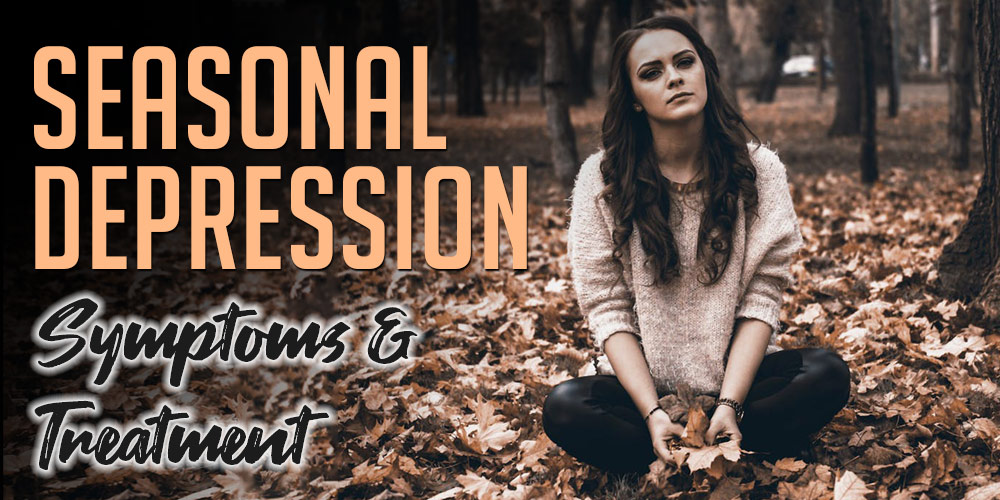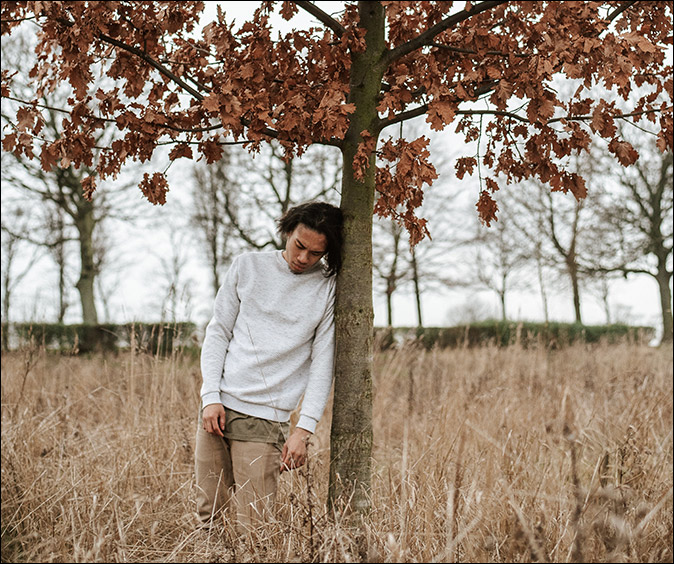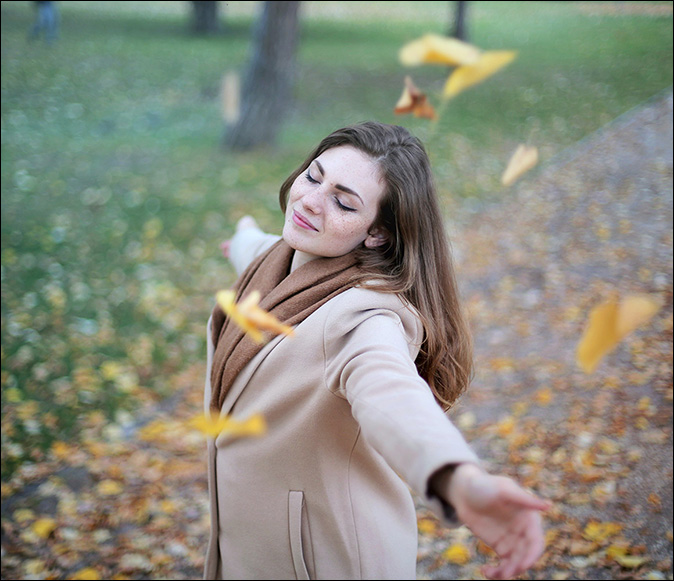
The fall and winter seasons can be exceptionally beautiful, as trees shed their leaves and give way to colder temperatures and a blanket of snow in some parts of the country. However, this time of year can also bring on mental health challenges, such as seasonal depression.
The added isolation of quarantine, because of the COVID-19 pandemic, might even make the condition more acute in some cases.
Unfortunately, the stress of uncomfortable, sometimes painful symptoms can drive people to self-medicate with drugs or alcohol, which will only worsen the condition.
This form of depression should not be confused with situational depression, which may result in similar symptoms.
What is Seasonal Depression?
Seasonal Affective Disorder (SAD), also referred to as winter depression or seasonal depression, is a condition listed in the Diagnostic and Statistical Manual of Mental Disorders (DSM-5) as a type of major depressive disorder with seasonal patterns.
The weeks between January and February, when there is less sunlight and people are often forced inside because of the cold weather, are generally the most difficult months for seasonal depression.
With fewer daylight hours, people can actually experience a chemical imbalance in the brain that affects their circadian rhythms, leading to shifts in mood and feeling out of sorts during the day.

An estimated 5 percent of adults in the United States deal with seasonal depression. It is more common among women, but men are certainly affected as well. Though the condition can occur in people of any age, the typical onset is in people between the ages of 18 and 30 years old.
As the American Psychiatric Association (APA) notes, seasonal depressive disorder “is more than just the winter blues.”
In some cases, the symptoms of this disorder can interrupt or severely diminish a person’s ability to take care of his or her day-to-day responsibilities.
Left untreated, any form of depression can spiral and deepen, creating not only serious mental health issues, but also causing the loss of a job or damage to personal and family relationships.
It some cases it can lead to other conditions like anxiety or substance abuse issues from trying to cope with the symptoms through self-medication with drugs or alcohol.
What are the Most Common Seasonal Depression Symptoms?
Many of the typical seasonal depression symptoms of the condition mirror those of major depression.
Most people who are affected by it will begin to feel better as summer approaches and daylight hours are extended. But during an episode of seasonal affective disorder, symptoms can range from mild to severe.
Those who cope with the disorder often find that they are continually fatigued and sleeping far more than usual. The combination of physical and mental changes can be particularly difficult.
Some of the more common symptoms of seasonal depression can include:
- Loss of interest in activities or relationships that a person normally enjoys
- Changes in sleep patterns, including difficulty getting out of bed at a regular time
- Issues with appetite and diet, typically overeating or craving carbohydrates
- Lack of physical and mental energy, likely related to oversleeping and poor diet habits
- Difficulty concentrating and focusing mentally, along with being fidgety or having difficulty sitting still
- Fatigue may also lead to foggy thinking, slowed speech and movement
- Feelings of worthlessness, hopelessness and guilt
- An increase in alcohol consumption as a way to self-medicate
- Suicidal thoughts and ideations can also occur in severe cases
Understanding the signs and symptoms is an important first step in knowing how to fight seasonal depression and employ an effective treatment approach.

Seasonal Depression Treatment Approaches
It’s always important to say that there is no shame in experiencing symptoms or seeking treatment for seasonal depression. There is often a stigma associated with mental health issues, but the truth is that depression and related illnesses are incredibly common and treatable.
The good news for those struggling with winter depression is that symptoms tend to ease with the end of the season, but seeking treatment can help speed up the process or avoid it almost entirely.
In some cases, antidepressant medication is suggested in combination with counseling. Skill based treatment approaches, like cognitive behavioral therapy (CBT), which helps people regulate their emotions and alter unhelpful patterns of thought, are particularly useful.
There are also some natural and practical ways to combat the symptoms of seasonal affective disorder.
7 Seasonal Depression Treatment Methods
1. Natural or Artificial Sunlight for Seasonal Affective Disorder
Adding more light to your daily routine can work wonders since reduced daylight hours in the winter can be one of the biggest reasons people feel become depressed.
Getting more light can take several different forms, such as going outside during the day, even in colder temperatures. Daylight, believe it or not, has healing properties for SAD.
In darker climates, a seasonal affective disorder lamp can provide some ultraviolet light to mimic the sun. There are variety of SAD lamps available online, with many of them costing under $200.

2. Exercise Regularly
Even a little bit of regular physical activity, like a brisk half hour walk every day, can help reduce stress and decrease the symptoms of seasonal depression.
In the summer months, it’s natural to get regular exercise outside. In the winter it can take some extra effort to bundle up and go outdoors.
If this is the case, sign up for a winter membership at a gym or indoor sports facility. Finding one with a pool scores bonus points.
3. Healthy Eating Habits and Lifestyle
To help overcome seasonal depression, try to maintain a healthy diet and lifestyle by eating fresh fruits, vegetables, fish and lean proteins. This also includes avoiding or severely limiting depressants like alcohol, marijuana and other drugs.
Eating more serotonin rich foods like salmon or poultry, leafy greens, eggs, tofu, and others can help increase this feel-good neurotransmitter to improve your mood.
4. Mental Stimulation
Stimulate your brain with healthy, mindful activities like yoga and meditation, both of which can help quiet the mind and reduce stress triggers.
Practicing meditation and mindfulness on a regular basis can help reduce stress the entire year round, but they play an even more important role during the long, dark winter months.
5. Socialize
Socialize as much as is reasonable, either by spending time with family and friends, or by volunteering for a cause that’s particularly important to you.
Covid-19 has made it more difficult to socialize in person on a regular basis. But it has taught many of us how to make use of online videoconferencing to keep in contact with those dear to us.
6. Sleep
Try to keep a regular sleep and wake schedule, by going to bed and waking up at the same time every day, even on the weekends. After a while, the body will adjust to this cycle and you will start to get more restful, regenerative sleep.
Sleep is considered one of the three pillars of health, along with eating right and exercise, although many of us discount its benefits at our own detriment.
7. Seek Professional Help for Seasonal Depression
Finally, don’t be afraid or shy about seeking help for seasonal depression or any other mental health challenges.
Taking care of ourselves is always the smart and the responsible thing to do so that we can be present, productive, and available to those we care for and love. Not all of us can do it alone, and there’s no shame in asking for help when you’re feeling down.
If drugs or alcohol are also a problem, consider professional depression and addiction treatment before becoming overwhelmed.
Learning how to fight seasonal depression, or seasonal affective disorder (SAD), really can be as easy as incorporating many of the treatment approaches outlined here.
Certainly these are helpful all year long, but they’re especially important for getting through the winter blues until the weather breaks and spring approaches.
Related Posts
- Psilocybin Therapy for Depression Treatment and Mental Health
The push to find new and effective treatment approaches for mental health issues like Psilocybin…
- Alcohol Dementia Causes, Symptoms and Treatment
Note: Alcohol Dementia goes by many names including, alcohol-related dementia, alcoholic dementia, and alcohol-induced dementia.…
- Histrionic Personality Disorder Symptoms, Causes, Treatment
The general public often misunderstands personality disorders. These are complex mental illnesses that might present…
